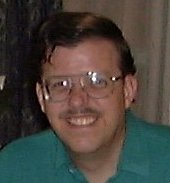|
From: http://www.aerocompinc.com/faq/b.htm
In the US:
After assembly of a new amateur-built experimental airplane, a test pilot (sometimes the owner himself) must fly the airplane for at least 25 hours (with certified engine/prop or 40 hours with uncertified engine/prop) and show that "the aircraft is controllable throughout its normal range of speeds and throughout all the maneuvers to be executed; and [that] the aircraft has no hazardous operating characteristics or design features." [FAR 91.319b] This is referred to in the aircraft's operating limitations [FAA Order 8130.2D chg 1] as the "Phase 1" Test Flight Period.
Note: Passengers may NOT be carried during the Phase 1 Test Flight Period, even if you CAN find passengers stupid enough to want to!
After successfully completing Phase 1, the aircraft enters into "Phase 2" of its operating limitations. During the remainder of the airplane's useful life, it will normally be operated under the same rules [14 CFR Part 91] as most other privately owned/operated general aviation aircraft.
FAR 91.319 has a few rules applicable particularly to experimental aircraft. FAR 91.319c states that "...no person may operate an aircraft that has an experimental certificate over a densely populated area or in a congested airway". Interestingly, many pilots remember this rule from 91.319, but conveniently forget a similar rule applicable to ALL airplanes in FAR 91.119 that states that "...no person may operate an aircraft below the following altitudes: (a) Anywhere. An altitude allowing, if a power unit fails, an emergency landing without undue hazard to persons or property on the surface."
The FAA's concern is with any action by a pilot that creates a hazard to innocent bystanders on the ground. In practice, this means that during the "Phase 1" Flight Test Period for every new amateur-built experimental aircraft, it may not be operated over any congested area. During the remainder of the aircraft's useful life, it "is prohibited from operating in congested airways or over densely populated areas unless directed by Air Traffic Control, or unless sufficient altitude is maintained to effect a safe emergency landing in the event of a power unit failure, without hazard to persons or property on the surface." [Reference: FAA clarification letter to EAA].
|
As you can see, there really is no significant difference between the rules for an amateur-built experimental aircraft that has completed its Phase 1 Test Flight Period, than for any other privately owned/operated general aviation aircraft.
|
|
